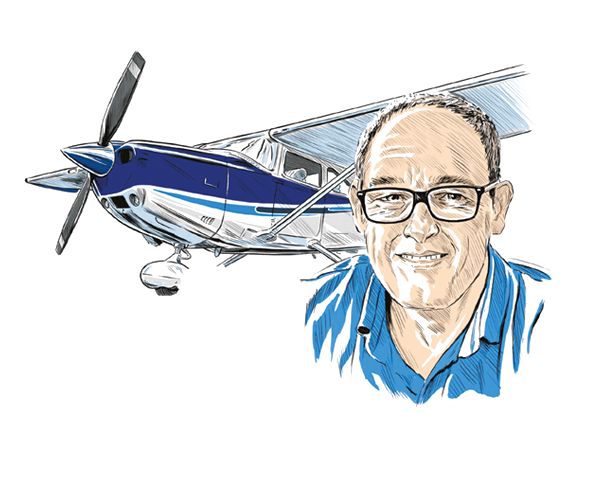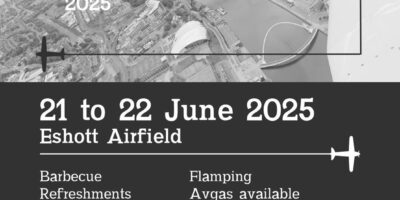The CAA recently issued a report it called Ending 2021 with clear objectives. It gave some examples of what it’s done, what it’s doing and what it’s thinking. The urge to have a bit of fun proved too hard to resist, and during a recent Livestream (Thursdays, 1930 on FLYER’s YouTube Channel) I put an end-of-year-school-report slant on the whole thing, and ended up awarding them an overall grade of E+ for its efforts. I thought that was generous, but it’s a serious subject, and maybe I was a bit harsh. Time for another look…
The report kicks off with talk of significant progress during Q4 of 2021 on some tactical projects. Having spent many years (with the help of other National Aviation Authorities and EASA) making aircraft maintenance an overly complex opaque mess, the CAA is now writing what it’s calling the
Air Worthiness Skyway Code. I think the guide will be about aircraft airworthiness rather than the worthiness of the air for us to fly in. Hopefully we’ll find out when the guide is published sometime in 2022. If it is anywhere near as good as the Skyway Code, I’ll be the first to congratulate the GA Department on its achievement. Imagine a world where engineers, owners, operators and pilots understand maintenance regulation.
There’s mention of the Carbon Monoxide Detection trial (CODE), which will survey a number of volunteers on a monthly basis, reporting findings quarterly. Then there’s a weakly worded statement on how we ‘might’ enable greater delegation to the BGA, how we are ‘examining the possibilities’ around unleaded fuel, and upbeat talk about ‘several lines off work to support Historic Aircraft along with our colleagues at the Department for Transport’, which I am cynically taking to mean, we’re doing stuff to keep Aviation Minister Robert Courts happy, because he’s an historic aviation fan. Lastly, on the tactical front at least, the CAA is looking at airfield innovation, although I assume that’s nothing as innovative as having approaches to airfields outside of controlled airspace…
After the tactical comes the strategic. First up is the much needed simplification of licensing. I see from elsewhere that this project is currently in the ‘Discovery’ phase. Let me help you out there – you’ll discover that it’s a friggin’ mess and that only six people in the country understand it completely. Sadly none of them work for the CAA. I believe the resulting consultation on the changes is due in April. Let’s hope it is significantly better thought through than the consultation on cost sharing, which I think we all know was not its best work.
“I worry we’re flagging in a sea of obfuscatory corporate speak”
Then there’s the rationalisation of maintenance organisations. This is apparently in the ‘Pre Discovery’ phase, which I guess puts it in the same boat as perpetual motion and time travel. Wrapping up the strategic projects is a plan to review Pilot Medical Declarations. Really? When they were introduced PMDs were brilliant, simple and efficient. A really progressive move supported by an easy-to-use declaration process. Since then there’s been change, confusion and a glancing blow with the masterpiece that isn’t CELLMA. May I offer something for what I presume is the ‘Pre-Pre-Discovery’ phase? Please don’t f*&k it up.
There was quite a bit of back slapping and self-admiration around things like new Safety Sense Leaflets (they’re very good). Last year’s Virtual Voyage (some good content spoiled by too much meaningless management speak and some key questions not so deftly side-stepped). Astral Aviation Consulting’s safety promotion work (a bit of a shaky start, signs of getting better), and finally Flying Heritage, a 16-page mag published by the CAA. Is it too cynical to remark on the number of senior CAA managers featured in something covering the Aviation Minister’s favourite subject? There’s a welcome from GA & RPAS Unit head Sophie O’Sullivan, a spread with pictures of three aeroplanes but four different shots of Robert Courts, and a promo piece on STEM opportunities by CAA CEO Richard Moriarty! Hmmm.
It’s easy for me to throw stones from the sidelines, but I worry that we’re languishing in a sea of obfuscatory corporate speak. Doomed to tread water while the regulatory tide rises. Churning out inane sentences about ‘enabling stakeholder engagement while reviewing considerable rationalisation opportunities’ sounds w*nk to you and me, but what if some people think that’s acceptable output for a days work? I hope I’m wrong, but it’s as if there’s a culture of fear, a worry about sticking your neck out and doing something a bit ambitious.
Progress needs strong leadership from on high (and I mean higher than the GA & RPAS Unit). Where’s the vision, the big ideas, the ‘tell it like it is plain language’? The report kicks off with: The CAA’s General Aviation Unit continues to make considerable progress in its aim to radically improve the regulation of General Aviation in the UK’. Sorry, but the last radical things I remember were SSDRs and PMDs. In short, I’m sticking with my E+ grading, along with that well-worn phrase, ‘Must try harder’…
Publisher, pre C-19 often found flying something new and interesting
[email protected]







